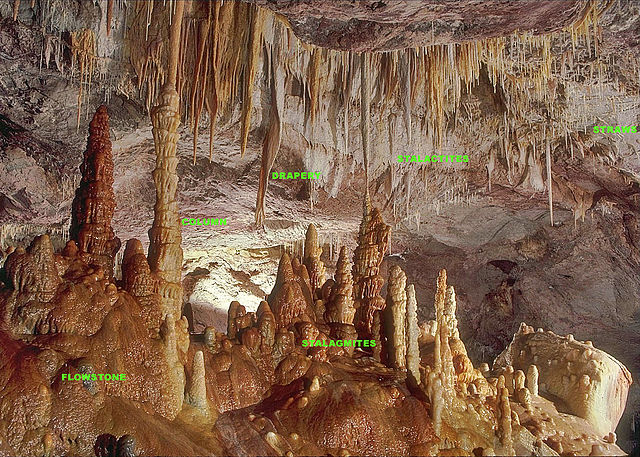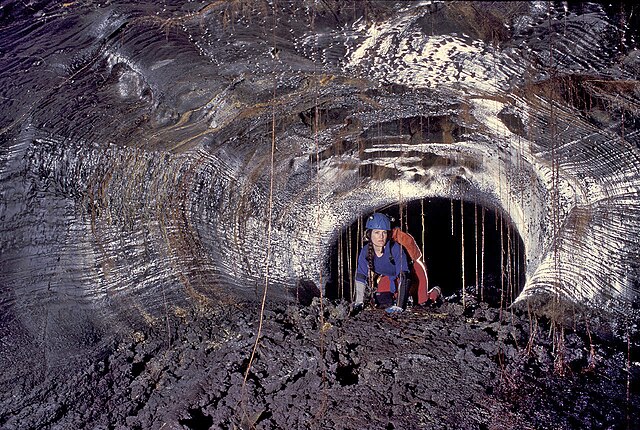A stalactite is a mineral formation that hangs from the ceiling of caves, hot springs, or man-made structures such as bridges and mines. Any material that is soluble and that can be deposited as a colloid, or is in suspension, or is capable of being melted, may form a stalactite. Stalactites may be composed of lava, minerals, mud, peat, pitch, sand, sinter, and amberat. A stalactite is not necessarily a speleothem, though speleothems are the most common form of stalactite because of the abundance of limestone caves.
Image showing the six most common speleothems with labels. Enlarge to view labels.
Pillars in the Caves of Nerja, Spain
Shark tooth stalactites
Ice stalactites on the gutter of a house
A cave or cavern is a natural void in the ground, specifically a space large enough for a human to enter. Caves often form by the weathering of rock and often extend deep underground. The word cave can refer to smaller openings such as sea caves, rock shelters, and grottos, that extend a relatively short distance into the rock and they are called exogene caves. Caves which extend further underground than the opening is wide are called endogene caves.
Lechuguilla Cave, New Mexico, United States
Speleothems in Hall of the Mountain King of Ogof Craig a Ffynnon, a solutional cave in South Wales.
Exploring a lava tube in Hawaii.
Painted Cave, a large sea cave, Santa Cruz Island, California








